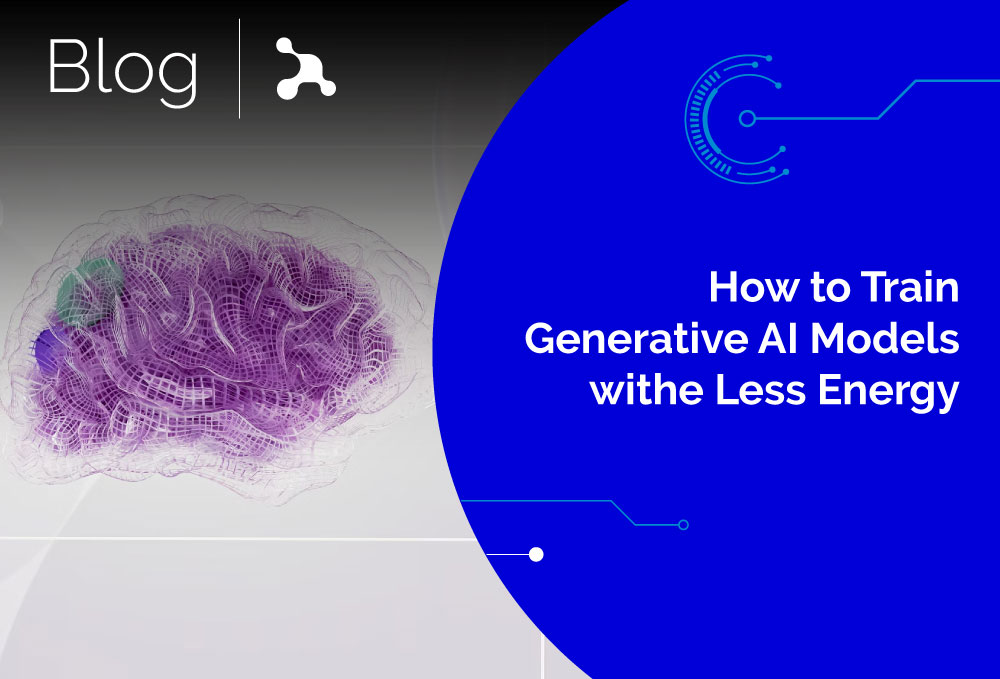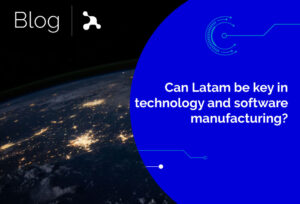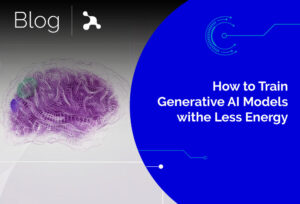Generative artificial intelligence has become one of today’s most powerful engines of innovation. From models capable of writing coherent essays to image generators that rival photography, the creative potential of these technologies seems limitless. However, this technical advancement is accompanied by a growing shadow: its enormous environmental footprint.
In the context of a global climate crisis, training large-scale models presents an uncomfortable contradiction. While they promise efficiency and automation, they also consume colossal resources. Models like GPT, DALL·E, or Stable Diffusion require millions of computing hours, specialized infrastructure, and, in many cases, energy from non-renewable sources.
So the big question is: how can we move toward a more conscious and sustainable training of AI models?
You may also be interested in: How to Create AI Chatbots
Understanding the Real Impact
Training a large-scale generative model goes far beyond running a script. It involves massive data centers, cutting-edge GPUs and TPUs, and training cycles that can last weeks or even months. This process, repeated on a global scale, has significant environmental consequences.
Recent studies have revealed that training some models can generate more carbon emissions than several international flights or even the full lifecycle of a car. And as models grow in size, so does their energy demand. More parameters mean more accuracy… and greater environmental impact.
Toward a Conscious Artificial Intelligence
In response to this challenge, a new mindset is emerging: conscious training. This philosophy doesn’t aim to halt innovation, but to redefine its foundations from an ethical and environmental perspective. Instead of following the “bigger is better” paradigm, it proposes optimizing, reusing, and rethinking every development stage.
Pretrained Models and Efficient Fine-Tuning
Leveraging already-trained models and adapting them to new tasks using fine-tuning techniques drastically reduces computational and energy consumption. Instead of starting from scratch, only what is necessary is adjusted. Tools like Hugging Face Transformers, along with techniques like LoRA (Low-Rank Adaptation) or adapters, enable this efficient transition.
Smaller and Optimized Models
Architectures like DistilBERT, TinyGPT, or MobileBERT show that it is possible to maintain high performance while significantly reducing the number of parameters. This structural efficiency allows training and deploying lighter models with a smaller energy footprint.
Curated and Smarter Datasets
The quality of the dataset is as important as the model. More curated and specific datasets can achieve better results with less information, reducing the number of required training cycles. Here, less really is more.
Sustainable Infrastructure
Where the model is trained also matters. Choosing cloud providers committed to renewable energy—like Google Cloud, AWS, or Azure—is an effective strategy to reduce environmental footprint. These platforms already offer tools and metrics to optimize the impact of each project.
Post-Training Compression and Optimization
Once a model is trained, techniques like quantization, model pruning, and knowledge distillation can be applied to reduce its size and computational demand without losing functionality. Frameworks like ONNX Runtime, TensorRT, and compression tools help implement these improvements efficiently.
Tools and Best Practices for a More Efficient AI
Moving toward conscious training of AI models is not just an ideal; it’s technically feasible and increasingly accessible thanks to tools, libraries, and approaches that reduce energy consumption without sacrificing performance. Below is a set of best practices organized by key categories, along with recommended tools applicable throughout the model’s lifecycle.
Using Pretrained Models and Efficient Fine-Tuning
One of the most direct strategies to reduce energy consumption is to avoid training models from scratch. Instead, base models are reused and adapted to specific tasks through efficient fine-tuning. This can save up to 90% of computing resources.
Recommended Tools and Techniques:
Hugging Face Transformers: library with hundreds of ready-to-use models.
LoRA (Low-Rank Adaptation) and IA3: low-cost methods to update models without altering all parameters.
PEFT (Parameter-Efficient Fine-Tuning): techniques like adapters, prefix-tuning, and prompt tuning.
OpenAdapter: modular platform to apply adapters to various models with ease.
Compute Optimization During Training
How a model is trained can greatly affect its energy impact. Opting for computational efficiency techniques significantly reduces energy use, training time, and memory consumption.
Best Practices and Tools:
Mixed Precision Training: uses lower precision (float16 or bfloat16) to reduce memory consumption and speed up training.
Supported by: PyTorch AMP, TensorFlow Mixed Precision, NVIDIA Apex.Gradient Checkpointing: saves memory by recalculating values during backpropagation instead of storing them.
Implementations: torch.utils.checkpoint, DeepSpeed, FairScale.Early Stopping: halts training when no further improvement is observed, avoiding unnecessary cycles.
Dynamic Batch Size: adjust batch size dynamically to balance memory and speed.
Smart Dataset Curation and Optimization
Training with less—but higher quality—data can be more efficient and effective than using large volumes of unfiltered data. Dataset quality directly affects how many resources are needed to reach good performance.
Recommendations:
Data Deduplication: removing redundant entries improves training efficiency.
Tools: Deduplicator, cleanlab, Argilla.Active Learning: select data samples that maximize information gain.
Dataset Distillation: techniques to condense large datasets into smaller, effective versions.
Examples: TinyStories, DataDreamer.
Sustainable Infrastructure and Cloud Choices
The energy footprint also depends on where the model is trained. Using infrastructure powered by renewable energy or located in low-carbon regions can significantly reduce environmental impact.
Available Options:
Google Cloud, AWS, Azure: offer data centers with renewable energy commitments and carbon-tracking tools.
CodeCarbon: open-source library that measures real-time energy use and carbon footprint of ML experiments.
Carbontracker and Experiment Impact Tracker: other useful tools to assess energy footprint per experiment.
Post-Training Compression and Optimization
Once the model is trained, its size and compute demand can still be reduced for deployment, inference, or future adaptation.
Recommended Techniques:
Quantization: reduces the precision of weights and activations (from 32-bit to 8-bit or even 4-bit).
Tools: ONNX Runtime, TensorRT, Intel Neural Compressor, Hugging Face Optimum.Model Pruning: removes unnecessary parameters without affecting overall performance.
Knowledge Distillation: trains a smaller student model to replicate the behavior of a larger teacher model.
Examples: DistilBERT, TinyML frameworks.Weight Sharing and Factorization: advanced strategies to reduce the number of operations needed.
Metrics and Indicators to Evaluate Energy Efficiency
To make conscious decisions, it’s crucial to have clear metrics that assess energy impact. It’s not just about technical performance but also ecological efficiency.
Key Indicators:
kWh consumed per complete training.
CO₂e emissions associated with training.
Energy efficiency: performance / energy use.
Reproducibility and traceability of impact (via experiment trackers).
A New Metric of Progress
Training models with less energy is not just about saving—it’s an act of responsibility. Adopting a conscious approach democratizes artificial intelligence, allowing more researchers, startups, and communities to innovate without relying on unreachable resources.
Ultimately, the future of artificial intelligence will be more sustainable not because technology demands it, but because society needs it. Redefining our success metrics—beyond accuracy and model size—to include efficiency, reproducibility, and environmental impact, will be key to responsible and lasting innovation.
You may also be interested in: Can AI Predict the Future of Bitcoin?




